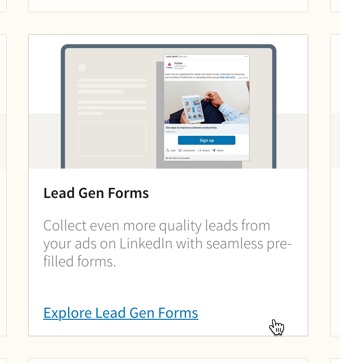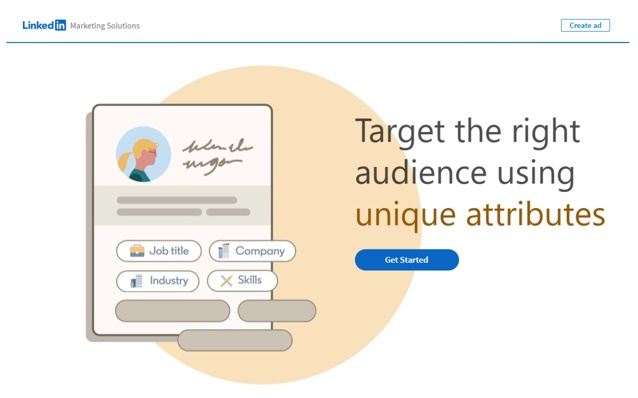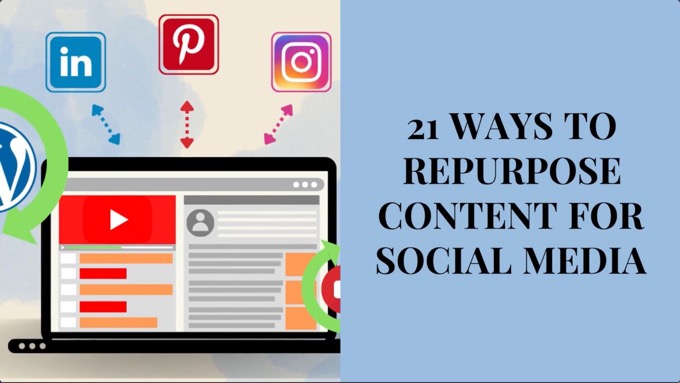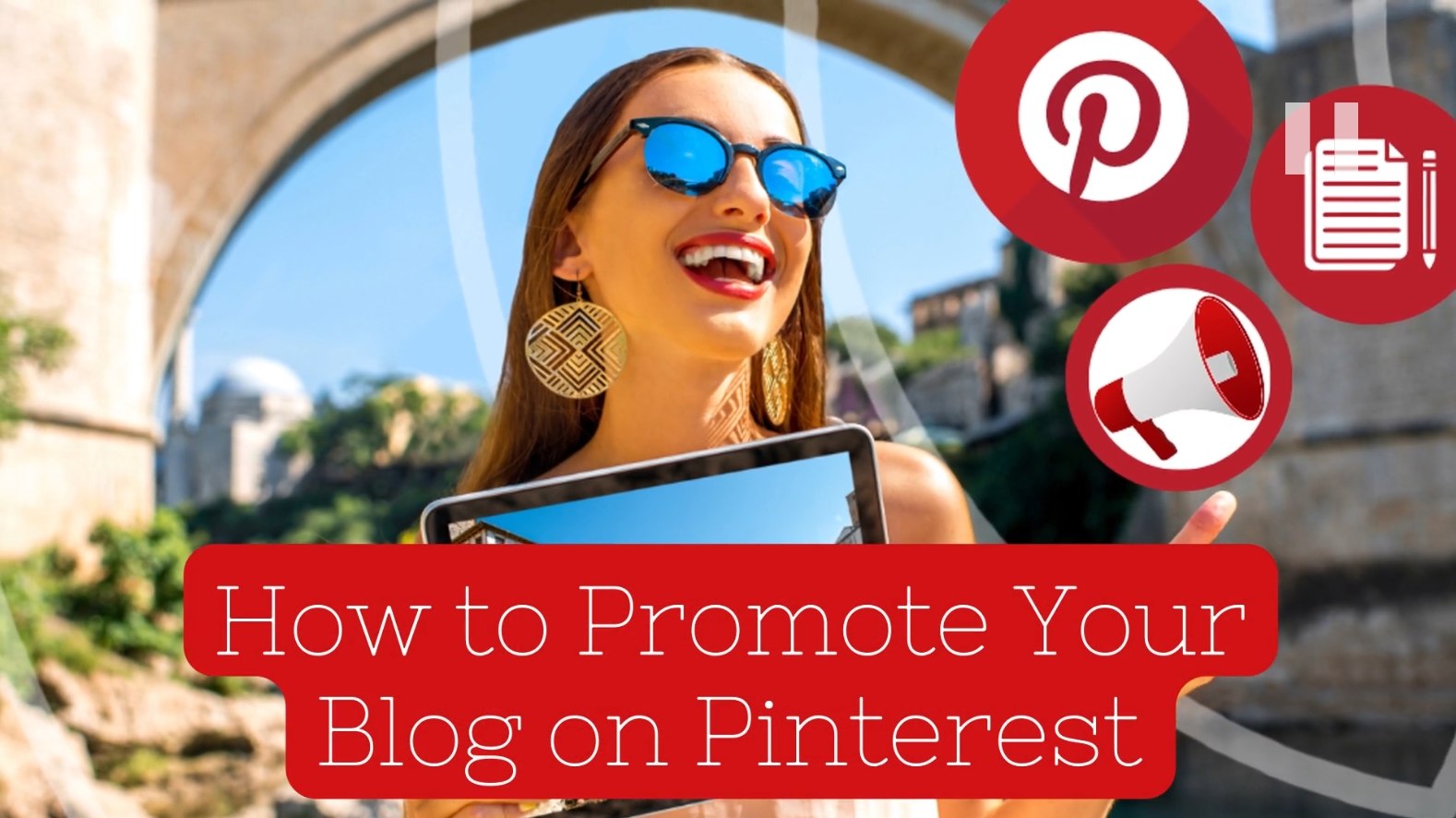Imagine the following.
A potential customer sees your ad on LinkedIn, they’re interested, and they click—only to be redirected to a landing page that takes too long to load.
Frustrated, they leave. Another lost lead.
This happens more often than you think.
The more steps in your lead capture process, the higher the chances of drop-off.
That’s why using a LinkedIn Lead Gen Form instead of a landing page is a game-changer.
Such ads keep users on LinkedIn, auto-filling their details directly from their profiles—eliminating friction and boosting conversions.
And when you combine them with LinkedIn’s unmatched B2B targeting, you get access to decision-makers who are ready to engage.
In this guide, you discover how to create, optimize, and scale LinkedIn Lead Gen Form Ads so you can start generating high-quality leads with confidence.
Let’s get started…
Why Use LinkedIn Lead Gen Form Ads?
When it comes to B2B marketing, LinkedIn is the place to be.
It’s where decision-makers, executives, and professionals actively engage with content that helps them solve business challenges.
But not all LinkedIn ads are created equal—and if your goal is to generate high-quality leads, Lead Gen Form Ads offer a huge advantage over traditional landing pages.
The Key Benefits of LinkedIn Lead Gen Form Ads
- Higher conversion rates—by auto-filling details like name, email, and job title from LinkedIn profiles, these forms reduce friction and increase submissions.
- Precision targeting—LinkedIn’s advanced audience filters—job title, industry, company size, seniority, and more—help you reach the right decision-makers without wasted spend.
- Seamless user experience—instead of sending users to an external landing page, Lead Gen Forms keep them on LinkedIn, creating a smoother path to conversion.
- Better lead quality—since LinkedIn users keep their profiles updated, you’re capturing accurate, business-relevant data instead of relying on manual entries.

How Does This Compare to Traditional Landing Pages?
A/B tests show that LinkedIn Lead Gen Forms often outperform external landing pages when it comes to conversion rates.
Why?
Because every extra step—clicking away, manually entering details, waiting for a page to load—creates an opportunity for drop-off.
Want proof?
Try running two identical LinkedIn ad campaigns—one driving traffic to a landing page and the other using a Lead Gen Form.
Track conversion rates, CPL (Cost Per Lead), and lead quality to see which performs better for your business.
If you’re not sure whether Lead Gen Forms are right for your campaigns, start with a small budget test.
Compare performance against traditional landing pages and optimize based on results.
Set Clear Campaign Objectives
Before launching a LinkedIn Lead Gen Form Ad, you need a clear goal.
Without one, it’s impossible to measure success or optimize your campaign effectively.
What Are You Trying to Achieve?
Your campaign objective should align with your broader marketing and sales strategy.
Here are some common goals for Lead Gen Form Ads:

Choosing the Right LinkedIn Campaign Objective
When setting up your campaign in LinkedIn Campaign Manager, select the Lead Generation objective.
This ensures your ad is optimized for form submissions rather than clicks or engagement.
From there, define your success metrics.
Ask yourself:
- Do you prioritize lead volume or lead quality?
- What’s your target CPL (Cost Per Lead)?
- How will leads be nurtured and followed up after submission?
Once your goal is set, determine the right Key Performance Indicators (KPIs) to track:
- For lead volume—measure total form submissions and CPL.
- For lead quality—track MQL (Marketing Qualified Leads) percentage.
- For nurturing success—monitor email open rates and follow-up conversions.
By defining your objectives upfront, you’ll ensure that every dollar spent on LinkedIn Lead Gen Form Ads drives measurable results.
Define and Target the Right Audience
Even the best ad creative won’t convert if it’s shown to the wrong people.
LinkedIn’s advanced targeting options give you the ability to reach decision-makers who match your ideal customer profile—but only if you use them strategically.
How to Build a High-Converting Audience
LinkedIn offers a data-rich targeting system that goes beyond simple demographics.
Here’s how to refine your audience for better lead quality and lower CPL (Cost Per Lead):
- Job titles and seniority—target decision-makers or influencers in the buying process (e.g., “Marketing Directors” instead of just “Marketing Professionals”).
- Industry and company size—focus on businesses that fit your ideal customer profile, whether that’s startups, mid-market, or enterprise.
- Skills and interests—use LinkedIn’s Skills filter to reach professionals with specific expertise relevant to your offering.
- LinkedIn Groups & engagement—target users who are part of industry-specific LinkedIn groups or have engaged with similar content.
- Website retargeting (matched audiences)—serve ads to people who have visited your website or engaged with previous LinkedIn content.
The Power of Segmentation
If your audience is too broad, your ads will waste budget on people unlikely to convert.
Instead, segment your campaigns to tailor messaging to audiences based on different personas.
If you’re promoting a lead generation tool, you might create separate campaigns for:
- Marketing Directors (focused on ROI and efficiency)
- Sales Leaders (highlighting how it helps close deals faster)
Before launching your campaign, use LinkedIn’s Audience Insights tool to analyze your selected audience. Check for:
- Job seniority balance—are you targeting decision-makers or entry-level employees?
- Industry alignment—do the industries match your most valuable customer segments?
- Potential audience size—is it too broad (low relevance) or too narrow (limited reach)?
By refining your audience before launching, you’ll:
- Improve conversion rates
- Reduce ad spend waste
- Attract higher-quality leads.
Craft an Irresistible Offer and CTA
Even with the perfect audience targeting, your ad won’t convert if the offer isn’t compelling.
Your lead magnet and call-to-action (CTA) must give prospects a clear reason to submit their details.
What Makes an Offer High-Converting?
Your offer should provide immediate, tangible value—something your target audience actually wants in exchange for their contact information.
Here are some proven high-converting offers:
Avoid generic offers like "Sign Up for Our Newsletter"—they rarely drive strong conversions. Instead, frame your offer as a solution to a specific problem.
Writing a CTA That Drives Action
Your CTA (Call-to-Action) needs to be clear, action-oriented, and benefit-driven.
Instead of weak phrases like Submit or Learn More, try:
- Get My Free Report—reinforces the value of the offer.
- Reserve My Spot—creates urgency for webinars or events.
- See It in Action—works well for product demos.
- Unlock Exclusive Insights—adds a sense of exclusivity.
A/B Test Your Offers and CTAs
Not sure which offer or CTA will resonate most with your audience?
Test multiple variations and track which drives the best results.
Example A/B Test
- Version A—“Download Your Free LinkedIn Ads Guide”
- Version B—“Unlock Proven LinkedIn Ad Strategies”
👉 Track conversion rates to determine which phrasing leads to higher engagement.
Run a small budget test with two different CTAs and analyze which one gets more form submissions.
Optimize based on real data, not guesswork.
Design Effective Ad Creative for LinkedIn
Your ad creative is the first thing your audience sees—so it needs to:
- Grab attention
- Build trust
- Drive clicks
A compelling headline, ad copy, and visuals can make all the difference in conversion rates.
Key Elements of High-Performing LinkedIn Ad Creative
1. A Headline That Hooks the Right Audience
Your headline should speak directly to your target audience’s pain point or goal. Keep it:
- Clear
- Concise
- Benefit-driven
- "Struggling to Convert Leads? Get Our LinkedIn Ads Playbook"
- "The LinkedIn Strategy That Helped 500+ B2B Companies Scale"
- "Want More Qualified Leads? This Report Shows You How"
Avoid vague or overly salesy headlines—focus on value and relevance.
2. Ad Copy That Drives Action
Your ad description should be:
- Short
- Direct
- Compelling
Make it about the reader and the benefits or potential transformation for them—not just your product or service and its features.
Formula for Effective Ad Copy—Problem + Solution + CTA
- Weak description example: “Download our latest eBook.”
- Strong description example: “B2B marketers waste thousands on bad lead gen. Learn the LinkedIn strategies that actually work. Get the free guide now.”
3. Visuals That Stand Out in the Feed
LinkedIn is predominantly a platform for professionals, but that doesn’t mean boring stock photos will perform well.
Use high-quality, branded visuals that align with your message.
- Use bold, readable text overlays to highlight key benefits.
- Feature real people instead of generic stock images.
- Keep designs clean and professional—avoid cluttered visuals.
- Ensure brand consistency (colors, fonts, logo placement).
Carousel Ads work well for showcasing multiple benefits or a step-by-step process. If your offer involves multiple resources (e.g., a toolkit), consider testing this format.
A/B Testing Ad Creative for Better Performance
Even the best-designed ads can be improved with testing. Run A/B tests on different creative elements to see what resonates best.
Test these variables:
- Headlines—“Boost Your B2B Lead Gen” vs. “Get More Sales-Ready Leads”
- Images vs. video—static graphic vs. short explainer clip
- CTA buttons—“Download Now” vs. “Get Your Free Guide”
Check out these examples of lead gen forms used by some top brands for inspiration, along with these other examples of LinkedIn ads:
- Over 140 examples from TheB2BHouse
- 30 examples from NoGood
- 11 examples from Driftrock
Study their different approaches and adapt their strategies for your campaigns.
Optimize Your Lead Gen Form for Conversions
Even if your ad grabs attention and gets clicks, a poorly designed lead form can tank your conversion rates.
The key is to make it as frictionless and relevant as possible while collecting the right information for your sales team.
The Anatomy of a High-Converting LinkedIn Lead Gen Form
1. Keep It Short & Relevant
The more fields you ask users to fill out, the higher the drop-off rate.
Stick to essential fields like:
- Full Name
- Work Email—avoid personal emails by setting this as a required field
- Job Title
- Company Name
If your sales team needs more details (e.g., company size, industry), test adding one custom question—but avoid making it feel like a survey.
2. Leverage LinkedIn’s Auto-Fill Feature
One of the biggest advantages of Lead Gen Forms is that LinkedIn automatically fills in user details from their profile.
This eliminates effort and boosts form submission rates.
Always preview your form to see what auto-filled fields look like—you want to ensure they align with your sales funnel needs.
3. Use Custom Questions Strategically
While keeping forms short is ideal, one or two targeted custom questions can help qualify leads before they enter your pipeline.
Here are a couple good examples of custom questions.
- “What’s your biggest challenge with ~topic~?” (Gives insights for sales follow-ups)
- “Do you currently use ~your type of solution~?” (Filters out unqualified leads)
- Avoid vague or unnecessary fields like “How did you hear about us?”—they don’t add immediate value to your lead gen process.
4. Craft a Strong Thank You Message
Once a lead submits the form, what happens next?
Your thank you message should set clear expectations and encourage immediate action.
"Thanks for signing up! Check your email for your free guide. Our team will follow up soon—book a call now to get personalized insights."
Include a link to a next step, like visiting a landing page, booking a demo, or downloading a resource. This keeps leads engaged while they’re still interested.
Test and Refine Your Forms Regularly
Conversion rates vary by audience and offer, so track and optimize your form performance over time.
Key metrics to monitor include:
- Form completion rate—percentage of users who start the form vs. submit it.
- Lead quality—are the leads sales-ready, or do they need more nurturing?
- Drop-off rate by field—identify which fields cause users to abandon the form.
By continuously refining your form length, custom questions, and follow-up strategy, you’ll generate higher-quality leads without increasing ad spend.
Track Performance and Refine Your Strategy
Launching your LinkedIn Lead Gen Form Ads is just the beginning.
To optimize your campaign and maximize your ROI, you need to:
- Track performance
- Analyze data
- Continuously refine your approach.
Key Metrics to Monitor
- Click-Through Rate (CTR)—measures how many people clicked on your ad compared to impressions. A low CTR may indicate weak ad copy, visuals, or targeting.
- Form Completion Rate—shows the percentage of users who started filling out your form and actually submitted it. A low rate suggests too many fields or an unclear offer.
- Cost Per Lead (CPL)—calculates how much you’re spending per lead. If CPL is too high, you may need to adjust targeting, ad creative, or bidding strategy.
- Marketing Qualified Leads (MQLs)—tracks the quality of leads, ensuring they match your ideal customer profile. Work with your sales team to define MQL criteria.
- Lead-to-Customer Conversion Rate—the ultimate test: how many leads turn into paying customers? If this is low, your lead nurturing or follow-up strategy may need improvement.
How to Optimize Based on Performance Data
1. Improve Low CTR
- Test new ad headlines, images, or formats (carousel, video, single image).
- Refine audience targeting—ensure you’re reaching the right decision-makers.
- Experiment with different CTA buttons (e.g., "Get My Free Guide" vs. "Download Now").
2. Boost Form Completion Rates
- Reduce the number of fields—keep it simple.
- Ensure auto-fill fields are working correctly for a seamless experience.
- Test a more compelling offer—does it solve an urgent problem for your audience?
3. Lower CPL Without Sacrificing Quality
- Optimize bidding strategy—test different bid types (manual vs. automated).
- Exclude irrelevant audiences—use LinkedIn’s Audience Insights to refine targeting.
- Use retargeting to re-engage users who clicked but didn’t convert.
4. Improve Lead Quality
- Refine audience segmentation—are you targeting too broadly?
- Use a qualifying question in the lead form (e.g., “Are you currently evaluating ~solution type~?”).
- Align marketing and sales teams—ensure both agree on what qualifies as a strong lead.
Set a weekly or biweekly check-in to review campaign data. Look for trends, identify drop-off points, and make incremental changes to improve results.
Use LinkedIn’s Campaign Manager Analytics to track key metrics, or integrate with your CRM (HubSpot, Salesforce) for deeper lead tracking.
By consistently analyzing and optimizing your campaigns, you’ll:
- Reduce wasted ad spend
- Improve lead quality
- Drive higher conversions.
Leverage LinkedIn’s Retargeting and Integration Features
Not all leads convert on the first touchpoint.
That’s why LinkedIn’s retargeting and CRM integration features are essential for nurturing leads and maximizing conversions.
Retarget Warm Leads with LinkedIn Matched Audiences
Many potential customers interact with your ad but don’t complete the form.
Retargeting lets you re-engage these high-intent users, increasing your chances of conversion.
How to Use LinkedIn Matched Audiences for Retargeting
- Website retargeting—show ads to users who visited your landing page but didn’t convert.
- Engagement retargeting—re-engage users who clicked your ad but didn’t submit the form.
- Contact list retargeting—upload your email list to serve ads to existing leads and nurture them further.
- Account-based marketing (ABM) retargeting—target specific companies you want to do business with.
Create a retargeting campaign that offers a secondary lead magnet (e.g., a free consultation or case study) to push leads further down the funnel.
Integrate LinkedIn Lead Forms with Your CRM for Instant Follow-Up
Speed matters.
Leads go cold fast if they’re not followed up with promptly.
Syncing your LinkedIn Lead Gen Forms with your CRM ensures leads are automatically transferred for immediate nurturing.
- Use LinkedIn’s native CRM integrations (e.g., HubSpot, Salesforce, Marketo).
- Set up automated email workflows to send a personalized follow-up within minutes of form submission.
- Assign leads directly to your sales team for faster outreach.
Set up a lead scoring system in your CRM to prioritize high-value leads for immediate follow-up.
Set Up an Automated Nurturing Sequence
Once a lead submits a LinkedIn form, don’t stop there.
Create an automated follow-up sequence to keep them engaged:
- Email 1 (immediately)—“Thanks for signing up! Here’s your ~offer~ + a quick tip.”
- Email 2 (2–3 days later)—“Did you get a chance to check out ~offer~? Here’s another resource.”
- Email 3 (5–7 days later)—“Let’s talk! Book a free strategy call.”
By retargeting warm leads and automating follow-ups through CRM integrations, you’ll:
- Increase conversions
- Shorten your sales cycle
- Maximize your LinkedIn ad ROI.
Frequently Asked Questions
Why should I use LinkedIn Lead Gen Form Ads?
Lead Gen Form Ads reduce friction, increase conversions, provide seamless user experience, and capture accurate, business-relevant data.
How can I optimize my LinkedIn Lead Gen Form Ads campaign objectives?
Align objectives with KPIs, define lead volume or quality priorities, target a specific CPL, and plan lead nurturing strategies.
How do I build a high-converting audience for LinkedIn Lead Gen Form Ads?
Refine audience by job titles, industry, company size, skills, interests, LinkedIn Groups, and website retargeting for better lead quality and lower CPL.
What elements make an offer and CTA compelling for a LinkedIn Lead Gen Form Ad?
An offer should provide immediate value, such as exclusive reports or tools, while the CTA should be clear, action-oriented, and benefit-driven.
How can I design effective ad creative for my LinkedIn Lead Gen Form Ads?
Use compelling headlines, direct ad copy, and high-quality visuals that align with your message; A/B test creative elements for better performance.
To Conclude
LinkedIn Lead Gen Form Ads offer one of the most effective ways to capture high-quality B2B leads—but only if you execute them strategically.
By defining clear objectives, targeting the right audience, crafting compelling offers, optimizing ad creative, and tracking performance, you can generate leads that truly impact your business.
Remember to:
- Test and refine your campaigns regularly to improve conversions and reduce costs.
- Use retargeting and CRM integrations to nurture leads and drive more sales.
- Take action today—start your high-performing LinkedIn Lead Gen campaign and watch your pipeline grow.









